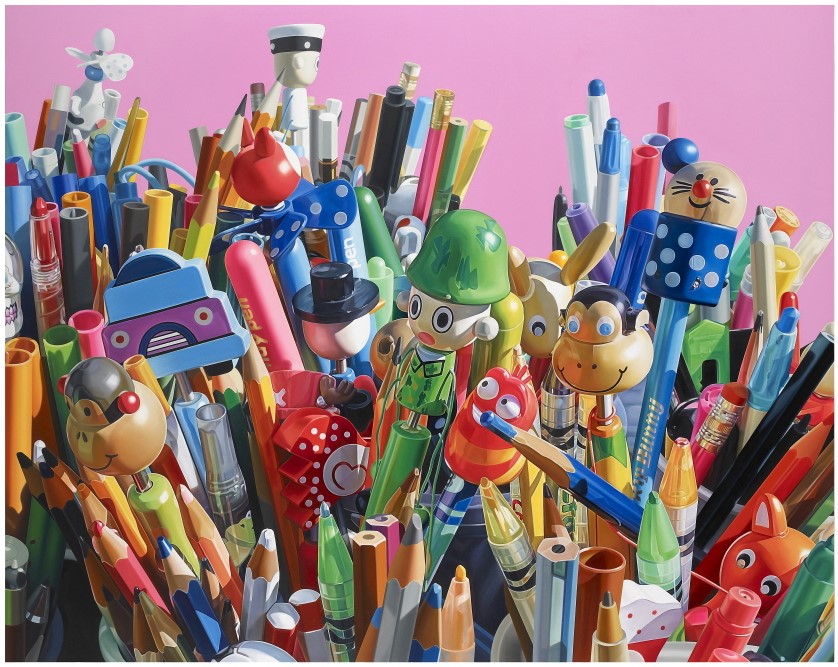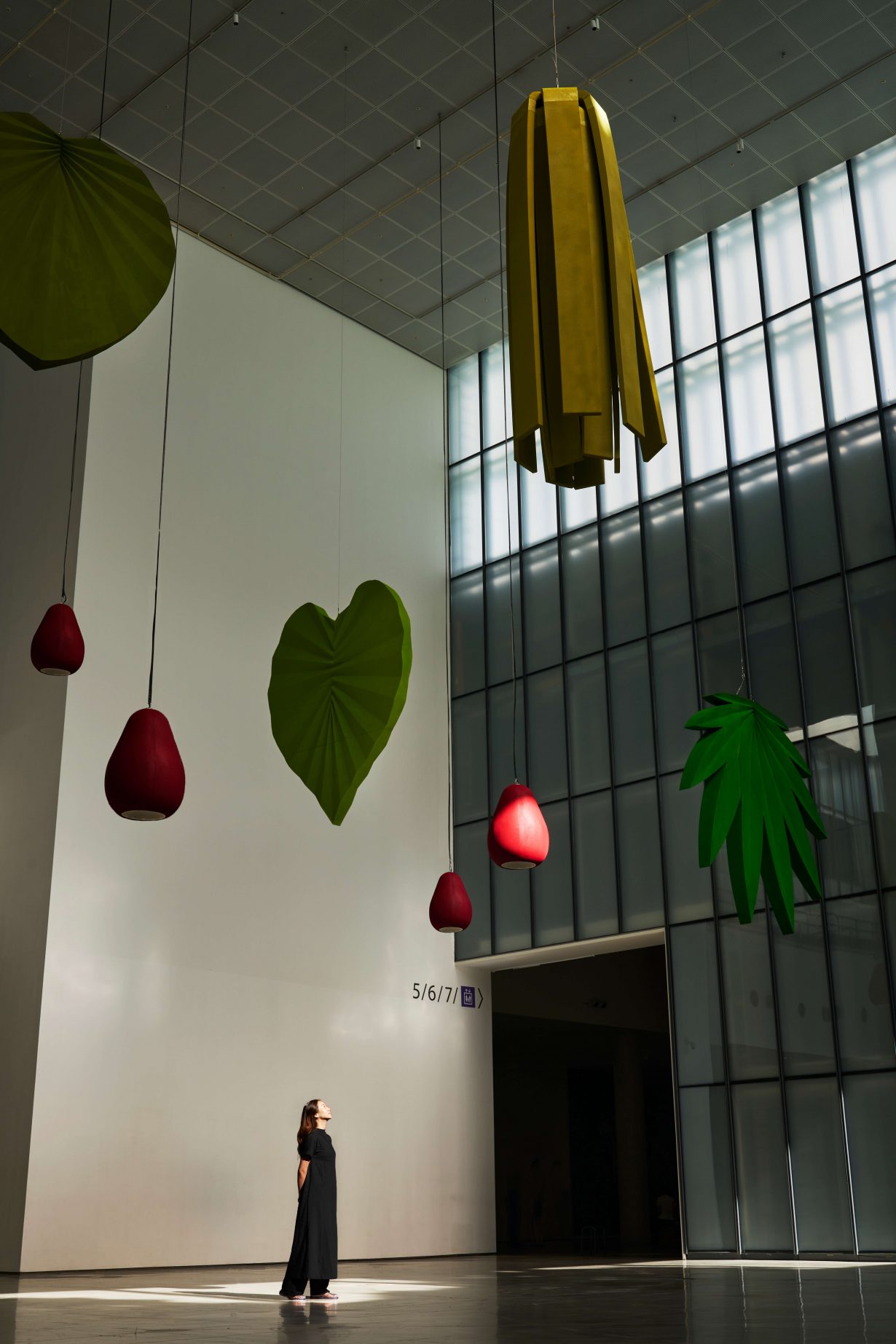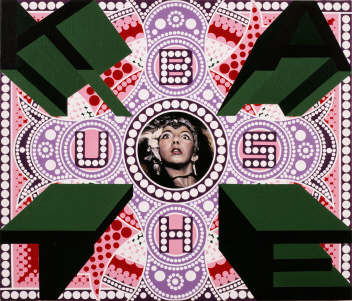There has been a consistent lack of attention given to artists born in the 1960s and 1970s who are now in their 50s. Shedding light on the works of artists who bridge the gap in contemporary Korean art is vital in terms of understanding the contemporary art history of Korea.
 Jung Yeondoo, ‘Imaginary Song,’ 2023, super-directional speakers, sub-woofer, amplifiers, audio interface, sound absorbing material sculptures, wires. Photo: sonongji
Jung Yeondoo, ‘Imaginary Song,’ 2023, super-directional speakers, sub-woofer, amplifiers, audio interface, sound absorbing material sculptures, wires. Photo: sonongjiWith Korean art gaining prominence on the global stage and a growing interest in art among the public, Korean artists are also enjoying increased popularity. In particular, there is a heightened interest in both blue-chip older artists and emerging artists.
Artists active from the 1960s to the 1980s, spanning movements from Dansaekhwa to Minjung art, consistently garner attention. Simultaneously, notable figures of Korean experimental art from the 1960s and 1970s are now being recognized, and a new generation of artists is rising to prominence alongside these blue-chip artists. This trend mirrors the dynamics in the Korean art market, where the focus is on young, emerging artists, established blue-chip artists, and internationally renowned figures.
However, there has been a consistent lack of attention given to artists born in the 1960s and 1970s who are now in their 50s. While recognizing popular artists is valuable, shedding light on the works of artists who bridge the gap in contemporary Korean art is equally vital.
 Jung Yeondoo, ‘Wall of Blades,’ 2023, sugar, honeycomb board, sound-absorbing material, Courtesy of the artist.
Jung Yeondoo, ‘Wall of Blades,’ 2023, sugar, honeycomb board, sound-absorbing material, Courtesy of the artist.These mid-career artists serve as vital connections between the seasoned, established artists and the new talents. They have established their presence in the art world, creating a stable body of work that reflects the contemporary context and contributes to the understanding of the evolution of Korean contemporary art.
When these artists first emerged, they drew considerable attention, mirroring the acclaim that today’s emerging artists receive. Yet, despite their ongoing contributions both within Korea and on the international scene, most of them have not achieved significant popularity. Is it because they do not possess the novelty of emerging artists or have not reached the astronomical prices of blue-chip artists?
A number of experts have pointed out that the major solo exhibitions of artists in their 50s have not been adequately covered by major institutions, including museums.
 Exhibition view: “MeeNa Park: House,” ONE AND J. Gallery, Seoul (1 September–22 October 2023). Courtesy of the artist and ONE AND J. Gallery. Photo: artifacts.
Exhibition view: “MeeNa Park: House,” ONE AND J. Gallery, Seoul (1 September–22 October 2023). Courtesy of the artist and ONE AND J. Gallery. Photo: artifacts.However, this trend is shifting. At present, several noteworthy artists are showcasing their works across various institutions. Lee Jeong Bae (b. 1974) is holding a solo exhibition at the Arario Museum in SPACE. Suki Seokyeong Kang (b. 1977) is featured at the Leeum Museum of Art, while Koo Jeong-a (b. 1967) is exhibiting at PKM Gallery. MeeNa Park (b. 1973) recently held an exhibition at Atelier Hermès and is currently exhibiting at One and J. Gallery. Additionally, Jung Yeondoo (b. 1969) is presenting a solo exhibition at the National Museum of Modern and Contemporary Art, Seoul, as part of the MMCA Hyundai Motor Series.
Many other artists in their 50s continue to be active in the art scene. Hong Kyoung Tack is holding large-scale solo exhibitions at Aproject Company; Lee Hyungkoo had a prominent solo display at the Busan Museum of Art last year; and Gwon Osang and Lee Jinju persistently present their works in various venues.
 Hong Kyoungtack, ‘Pens-Anonymous,’ 2021, Oil on linen, 181 x 227 cm.
Hong Kyoungtack, ‘Pens-Anonymous,’ 2021, Oil on linen, 181 x 227 cm.Yet, it is still true that a notable portion of young art professionals remain unaware of these mid-career artists, highlighting a gap in the understanding of Korean contemporary art history.
The 2000s marked a period where numerous galleries emerged without a proper direction, and artists seemed more driven by immediate sales than cultivating enduring careers. This was particularly evident during the art boom of 2007. When the art market subsequently went into decline, many of these galleries and artists vanished from the scene. In contrast, artists who are now in their 50s and remain active today managed to weather the economic downturn, maintaining a commitment to enduring artistic growth rather than fleeting sales.
Korean contemporary art is once again going through a period of prosperity. In light of this, it will be insightful to see which artists sustain their prominence and which artists fade away. For Korean contemporary art to maintain its trajectory, uninterrupted by the fluctuations of the art market, there is a need to address issues such as the absence of a robust gallery system for artist development, the rapid commercialization of emerging artists, and market biases that prioritize only a few in-demand artists.





















